Mattel Made Barbie Popular, but Bob Mackie Made Her a Fashion Icon
- Oops!Something went wrong.Please try again later.
- Oops!Something went wrong.Please try again later.
- Oops!Something went wrong.Please try again later.

At the 1959 American International Toy Fair in New York, an 11.5-inch plastic ingénue with improbably bombshell proportions made her debut. In her earliest iteration, Barbie was marketed as a “Teen Age Fashion Model” and was based on the German Bild Lilli doll that Mattel co-founder Ruth Handler had seen during her travels to Europe.
At the time, Bob Mackie was studying costume design at the since-closed Chouinard Art Institute in Los Angeles’ Westlake neighborhood. He would go on to a legendary career in fashion and entertainment, but already his eye for the female form was well defined. When he first saw Barbie, he was not impressed.
More from The Hollywood Reporter
Events of the Week: 'Barbie,' 'Mission: Impossible' and More
The Barbie Movie Marketing Campaign Will Be Taking Over Roku Too (Exclusive)
“I didn’t think she was very fashionable,” he says of the doll, who originally sported a simple black-and-white Chevron swimsuit, hoop earrings and a perky blond ponytail.
He had no way of knowing that he would become one of the people most closely associated with Barbie’s transformation into a feminist icon, an A-lister in her own right. Her global stardom will be on display again this month, when Greta Gerwig’s film about the mononymous toy, starring Margot Robbie, hits theaters July 21.
The 84-year-old Mackie has created 47 different dolls for Mattel, with a wide variety of face sculpts, body types and storylines. Mattel might have created Barbie, but Bob Mackie made her famous.
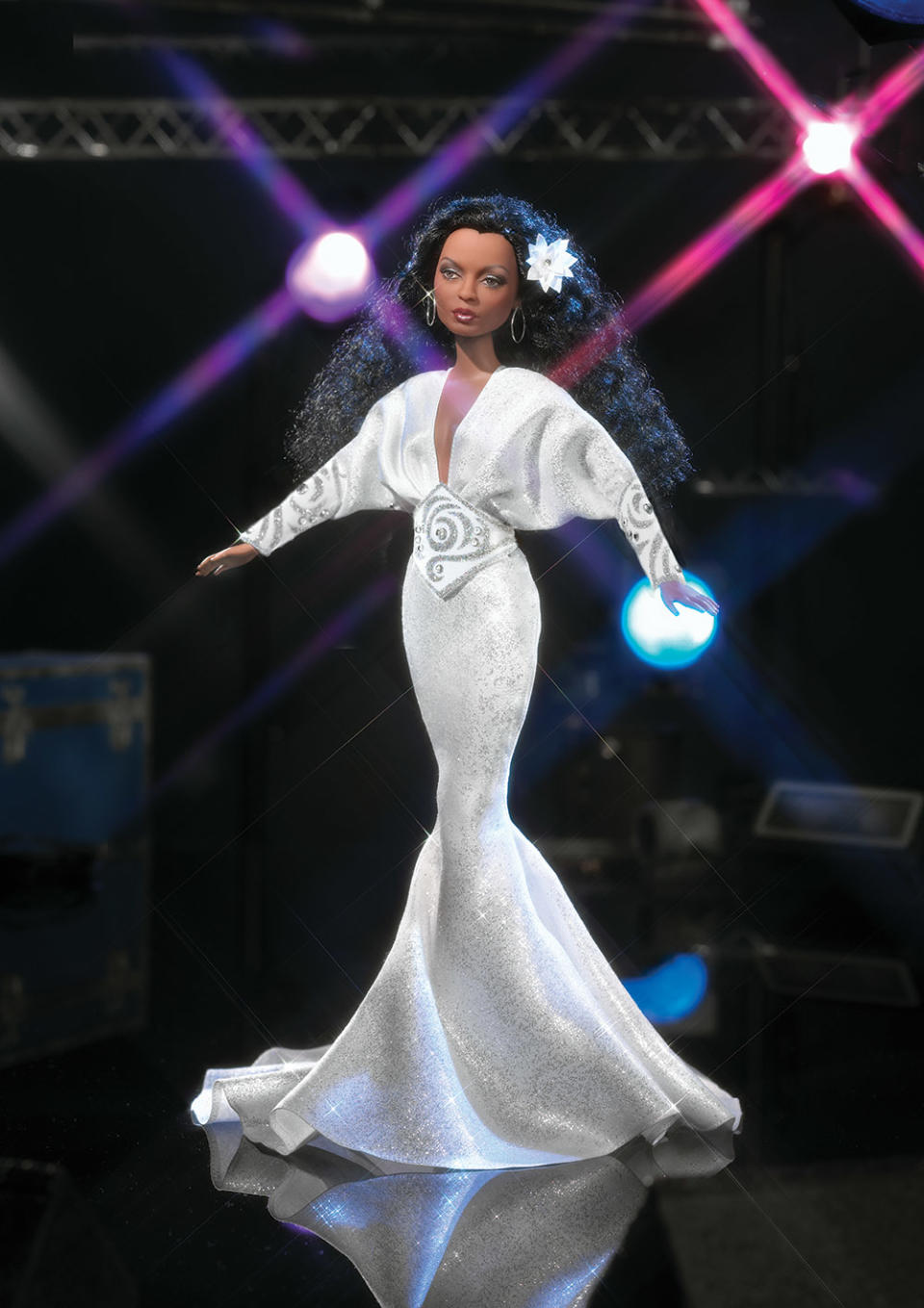
By the time Mattel approached Mackie to design his first Barbie in the late 1980s, his entertainment career was firmly established thanks to his costume work on an assortment of Broadway and Las Vegas shows and variety TV programs like Mitzi Gaynor’s Mitzi … Roarin’ in the 20’s and The Sonny & Cher Show. He had dressed celebrities such as Judy Garland, Tina Turner, Cher, Diana Ross and Carol Burnett. It was Mackie who, as an assistant to costume designer Jean Louis, sketched out the dress that Marilyn Monroe wore when she sang “Happy Birthday” to John F. Kennedy in 1962 — and which Kim Kardashian rewore to the Met Ball 60 years later, a stunt Mackie has criticized. His creations have earned him nine Emmy Awards and three Academy Award nominations, including one in 1973 for Ross’ Lady Sings the Blues. In 1982, the prolific designer launched his own ready-to-wear collection.
“There are fashion designers, but they can’t do costumes,” says Burnett, who estimates that Mackie created 17,000 costumes for her iconic CBS variety show. “And then there are costume designers that don’t do fashion. But Bob does it all. He’s the whole ball of wax.”
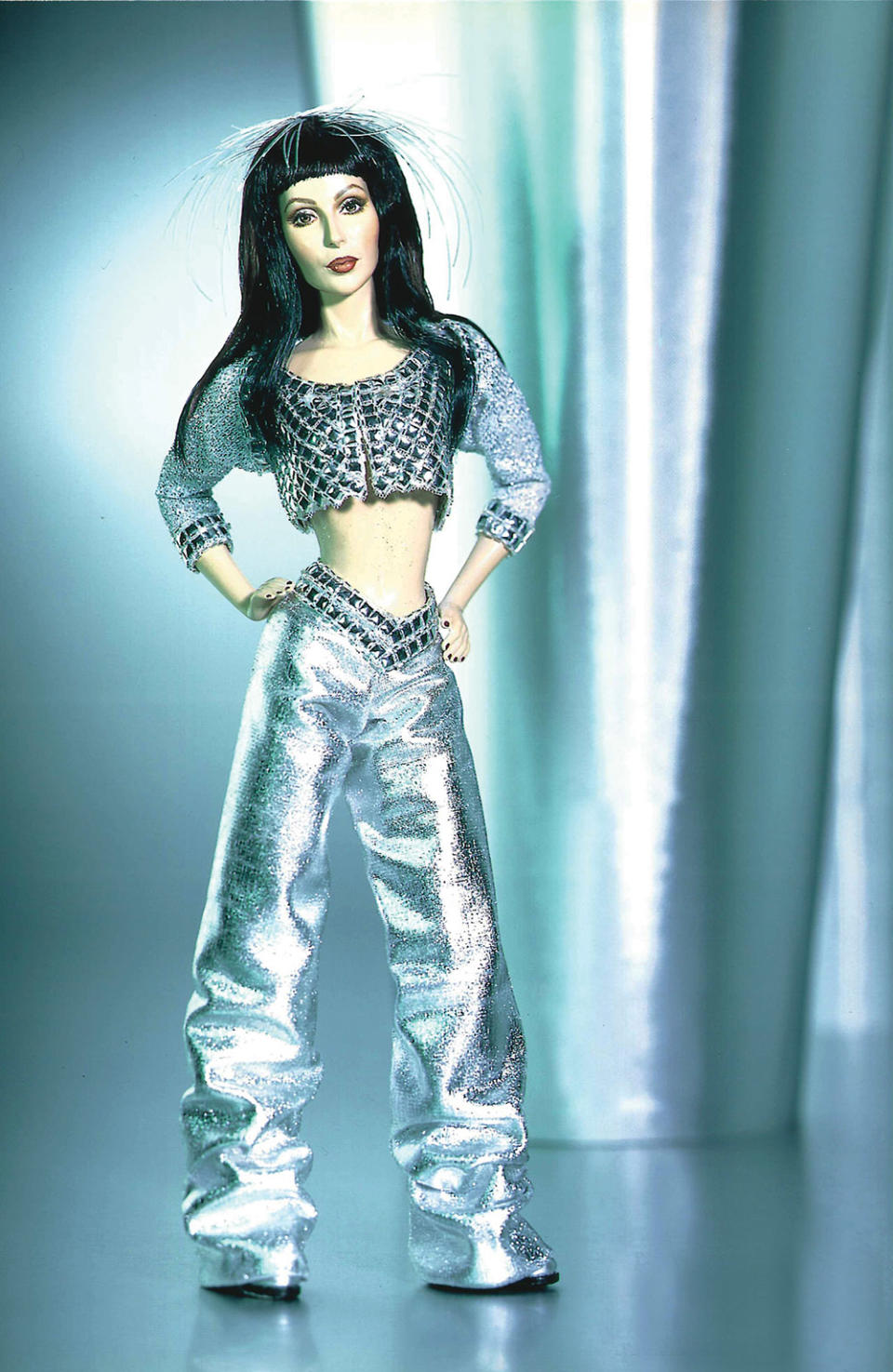
Mackie’s first creation for Mattel came in 1990. It was a limited edition “Gold” Barbie, with a long blond ponytail, a midriff-bearing top, a cascading skirt of golden sequins and a feathery boa. That the doll seemed to prefigure Madonna’s nearly identical look on tour shortly after only confirmed Mackie’s uncanny feel for the zeitgeist.
But Mackie soon moved on from prevailing trends of the era, in search of something new. “All American girls had blond hair at that point in time,” he says. “Once we started doing all different kinds of hair colors and [lengths], it was a way of making Barbie anybody and looking any way she wanted to look.”
Though Mattel has partnered with several couturiers since the early 1980s — including Oscar de la Renta, Donna Karan and Donatella Versace — Mackie is credited as the first designer to create a complete doll. “Not just the fashion, but he was involved with the whole look of the doll, from the hair to the face,” says Bill Greening, principal designer and Barbie brand historian at Mattel.
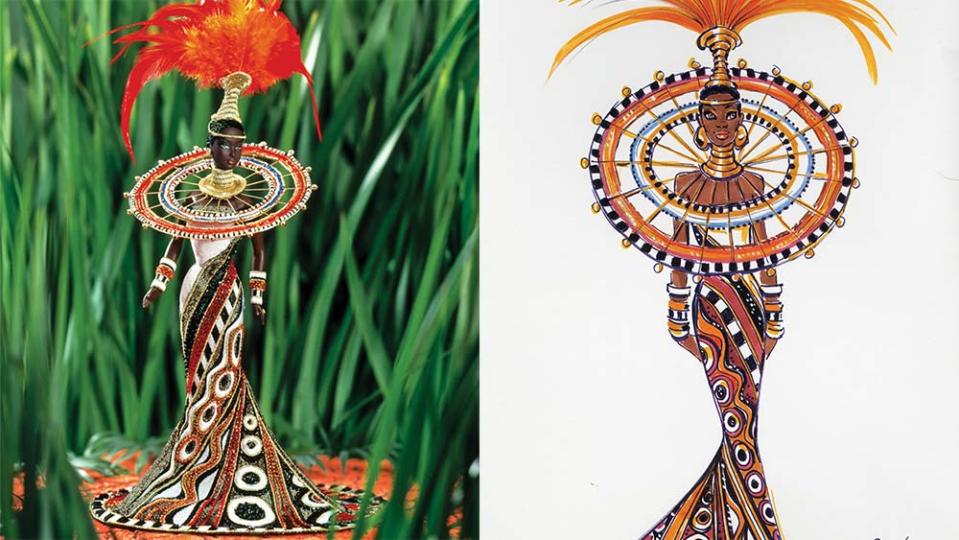
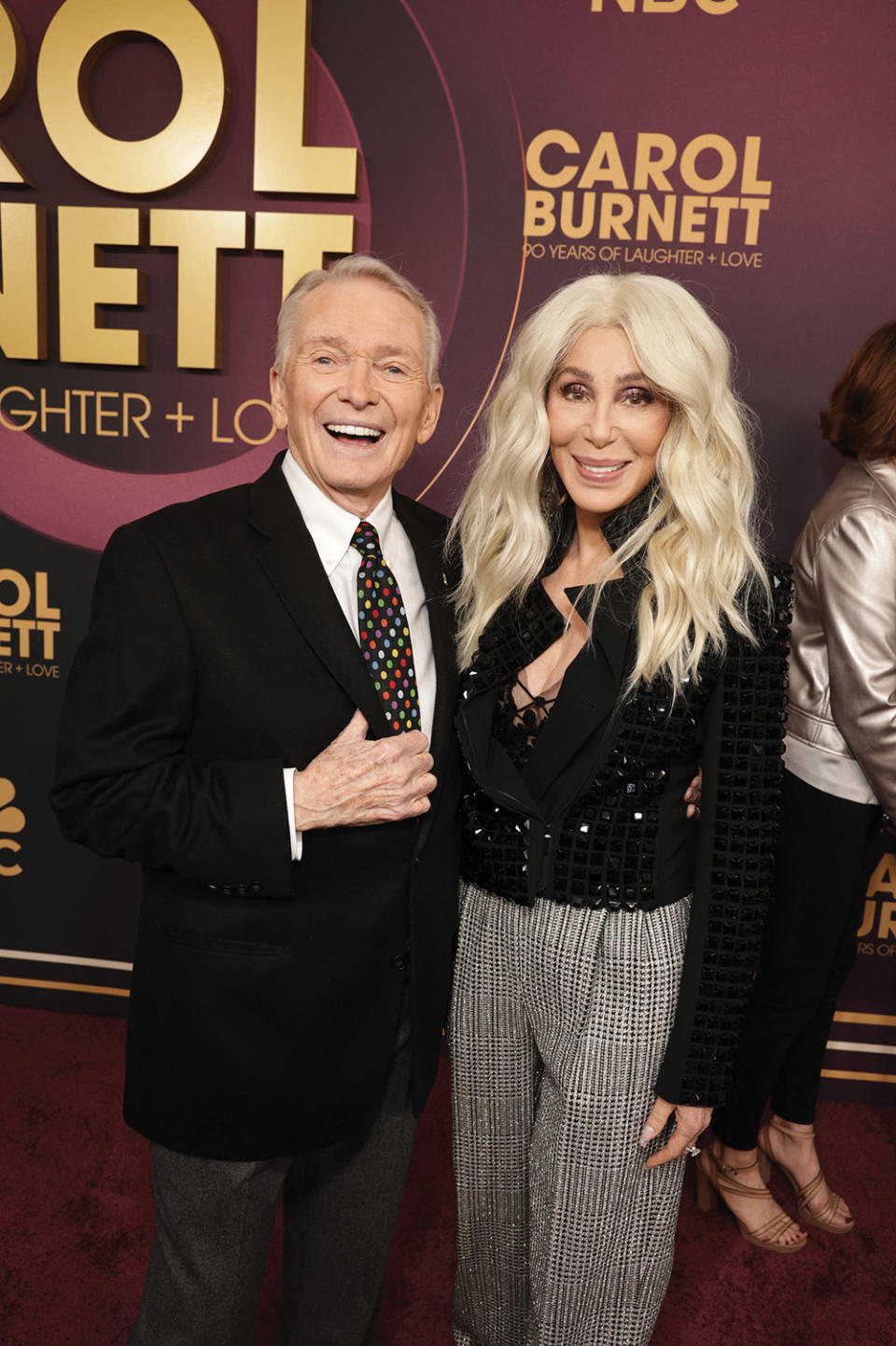
Mackie also is responsible for ushering in a new, more sophisticated expression for the doll — one that saw her transition into a multidimensional woman.
“When Mattel launched a closed-mouth version of the superstar sculpt, it debuted on the Bob Mackie Neptune Fantasy doll [in 1992], and so that became known as the ‘Mackie sculpt,’ ” says Greening. “It’s a beloved sculpt with Barbie collectors.”
Mackie’s maximalist aesthetic ensured that Barbie could mature without becoming staid. “Mackie is all about [being] over-the-top in the most glamorous way,” says Greening.
Mackie’s dolls were essentially wearing shrunken couture. “I was a real costume designer. And I had no desire to make her look like the bookkeeper or the airline stewardess,” he says. “This is more fantasy-oriented. She could be anything we wanted her to be.”
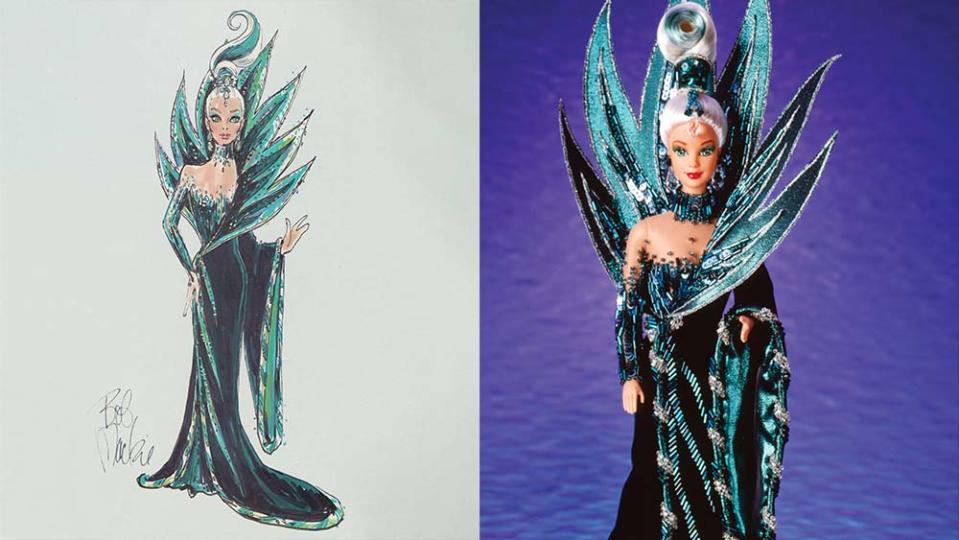
Known for his intricately detailed gowns for red carpets and the stage, often adorned with feathers, sequins, gemstones and artfully placed see-through sections, Mackie infused Barbie’s wardrobe — and, by extension, her identity — with the same drama and flair his celebrity clients expected from him.
Mackie hasn’t diluted his approach to costuming for Mattel’s diminutive superstar: “When you work with an 11-inch-tall girl, it’s all about scale, scale, scale,” he says. The designer’s creations for Barbie often call for hand-beading and embroidery techniques, as seen in his multicultural International Beauty collection that Mackie says are his favorites.
Mackie’s luxe doll designs were sometimes loosely inspired by visual motifs he’d created for the stage: His 1997 Jewel Essence Collection for Mattel, for example, was an outgrowth of heavily bedazzled costuming work for big Vegas shows.
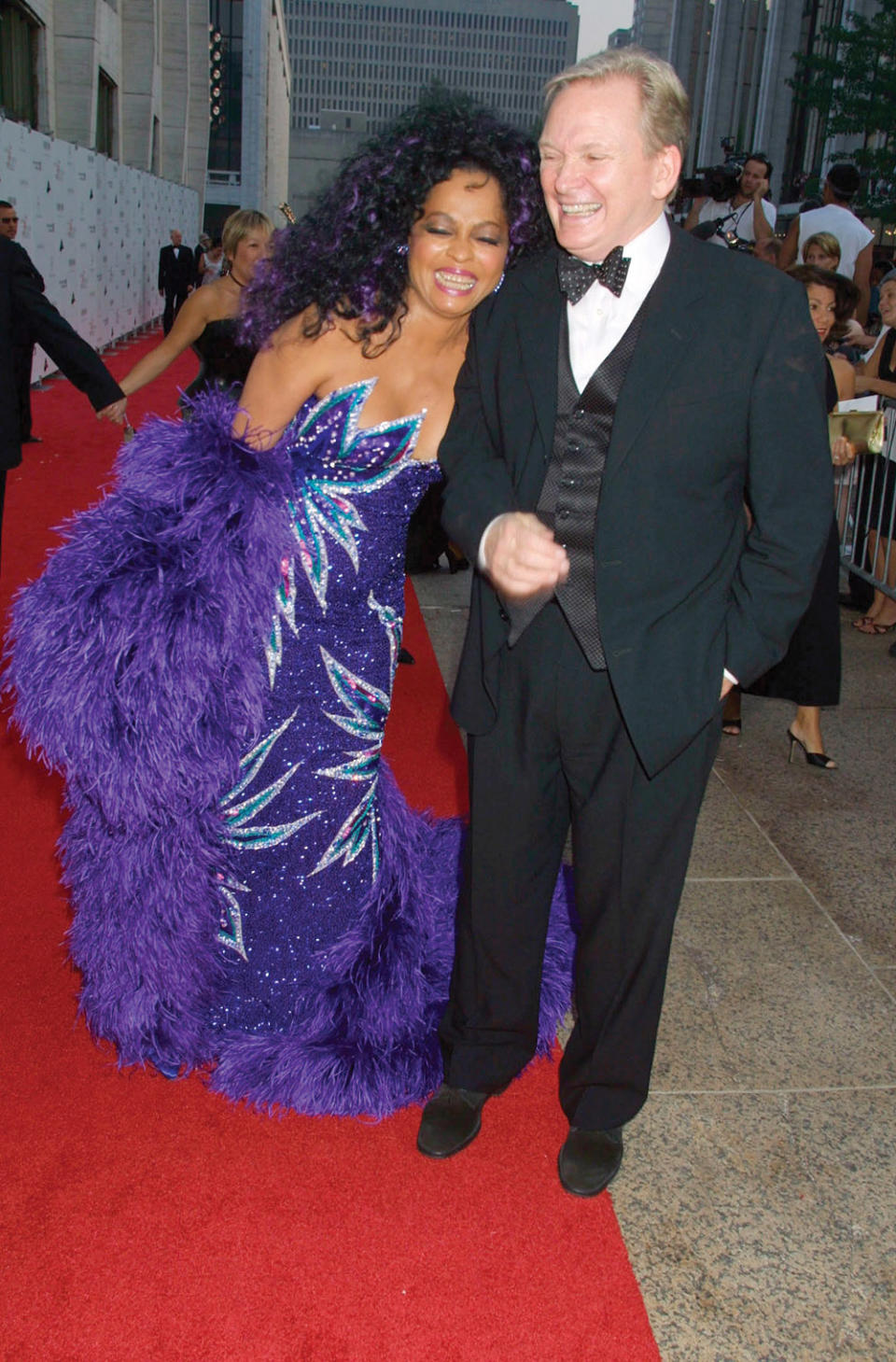
Executives at Mattel were smitten with Mackie’s work on The Sonny & Cher Show and suggested collaborating on a Barbie whose outfit could resemble one worn by Cher. It would become the first of several Barbie dolls based on Mackie’s Hollywood clients. Dolls inspired by Ross and Burnett would soon follow. (Burnett says she’s received hundreds of the Burnett Barbies from fans asking for autographs.)
Mattel says it sells about 100 Barbie dolls a minute. That popularity is due in no small part to Mackie’s contributions over the years. “Whether we’re doing embroidery or sequins or glitter … we’re really trying to capture that Mackie magic in Barbie scale,” says Greening, who first worked with the designer on a series of Cher Barbies re-creating the singer’s memorable outfits over the decades (including her controversial Native American costume from her 1973 “Half Breed” video).
Mackie’s Barbies based on celebrities were not the first to monetize stardom. “In the 1930s, thousands of Shirley Temple dolls were made,” notes Mackie. “It’s not a new idea at all.” But his work was novel in that it packaged a seemingly inaccessible, aspirational glamor on a mass scale.
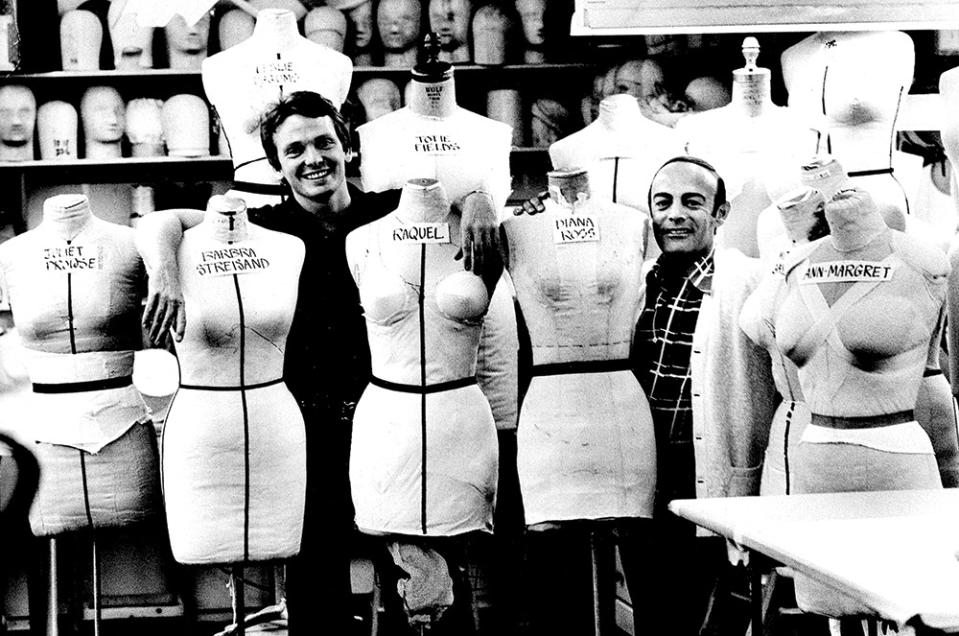
As part of his vision for broadening the scope, impact and authenticity of Barbie as a cultural icon, Mackie was adamant that Barbie embody different ethnicities and races and wear a variety of culturally specific garb (albeit rendered in his distinctly Mackie way). “All my fashion shows that I had done with real girls, I was always hiring, you know, all colors and all kinds of ethnic types,” Mackie says matter-of-factly, demurring at the suggestion that his approach to representation was ahead of its time. “And why not? That’s the world we live in.”
For the American fashion designer, Barbie is not just an inanimate model to map his ideas and ideals onto, but a female powerhouse much like the ones he’s made a career of dressing. Says Mackie, ever resolute and imaginative: “She can be anything. She’s been everything.”
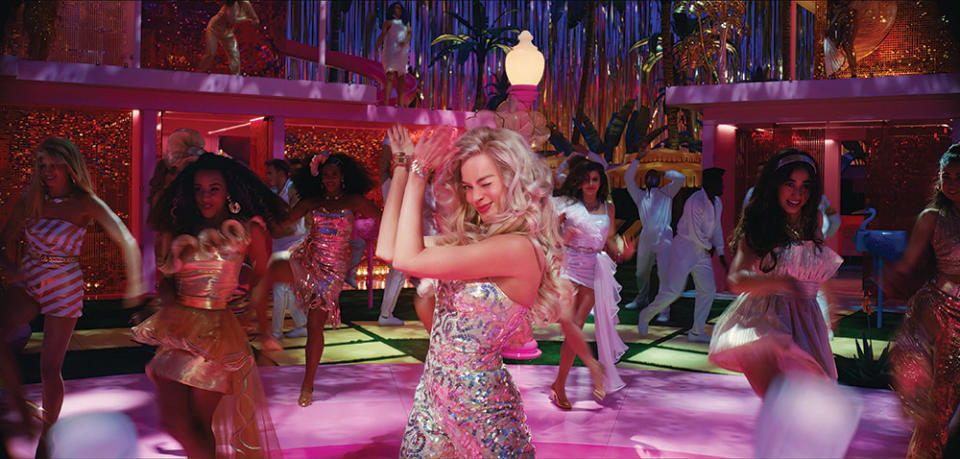
This story first appeared in the July 14 issue of The Hollywood Reporter magazine. Click here to subscribe.
Best of The Hollywood Reporter

